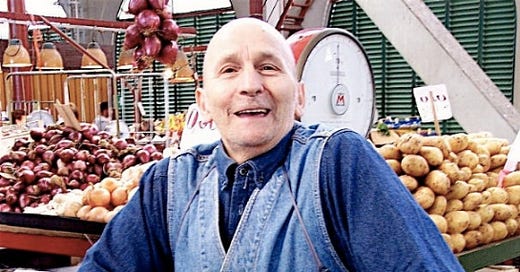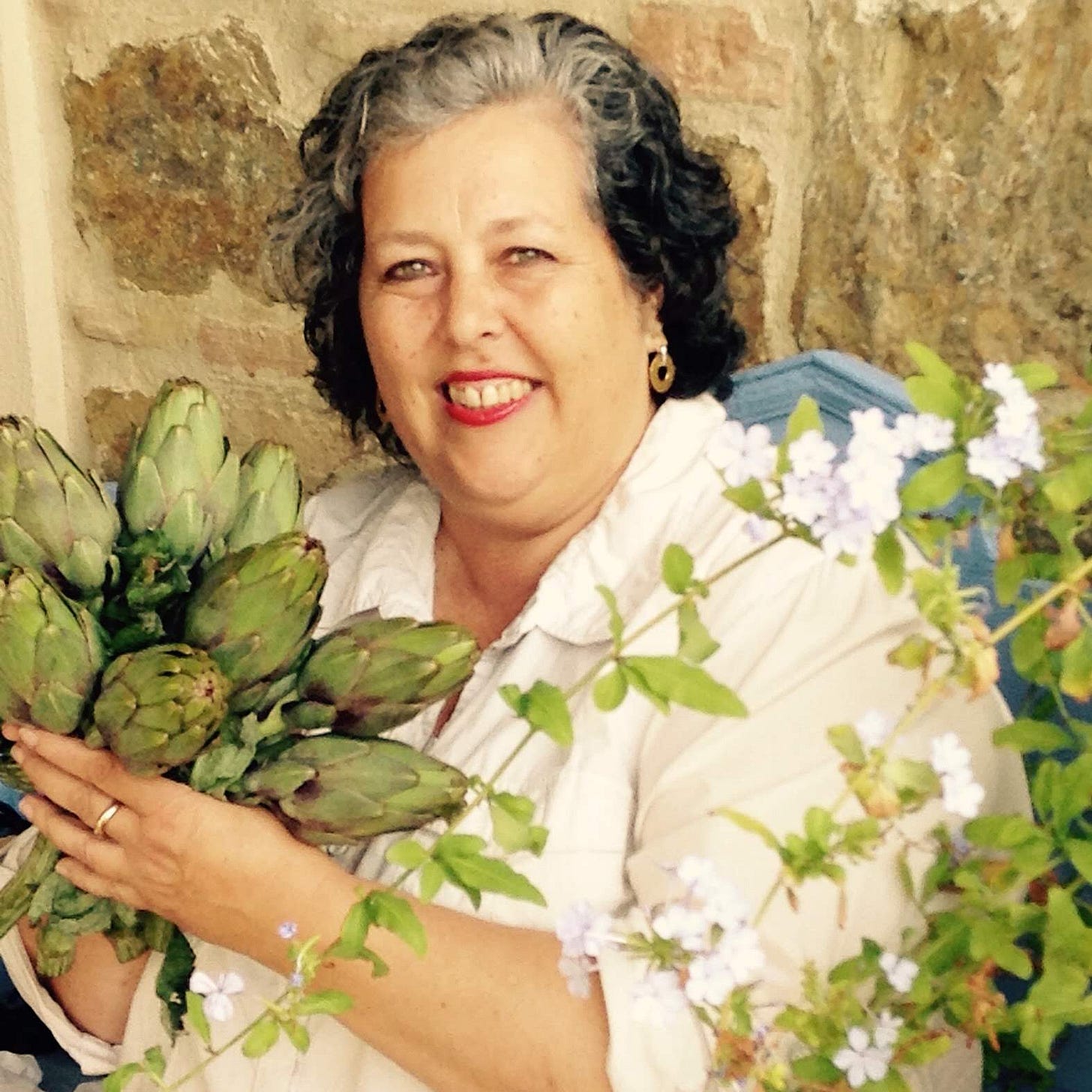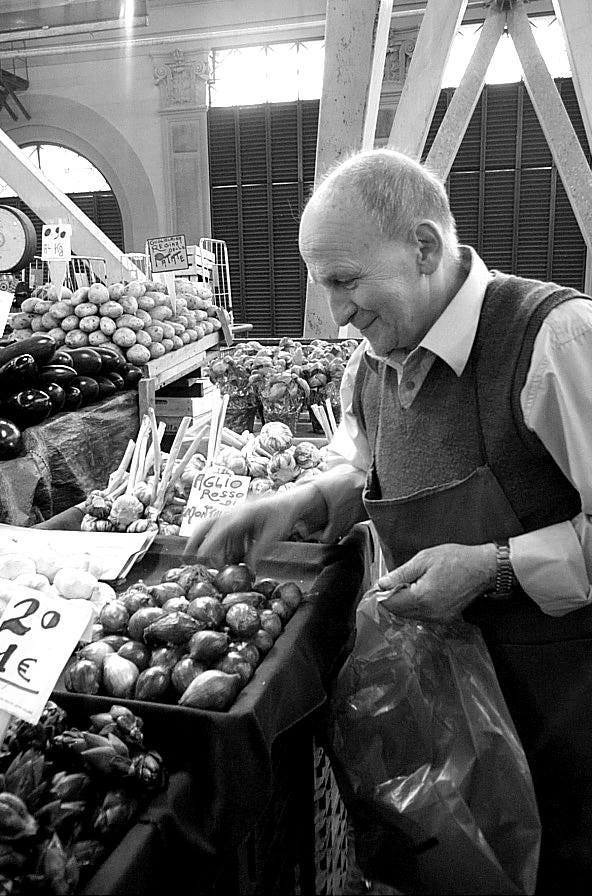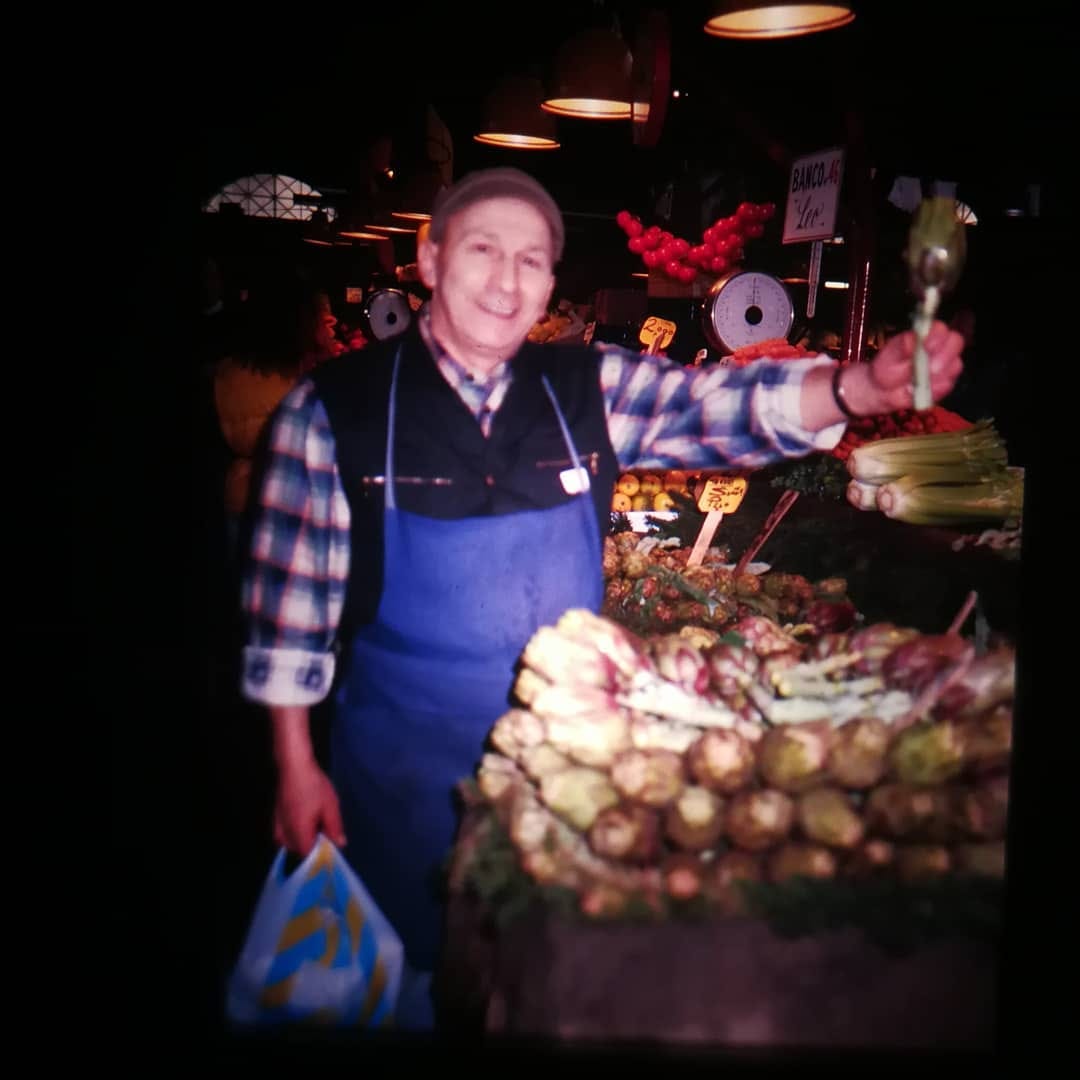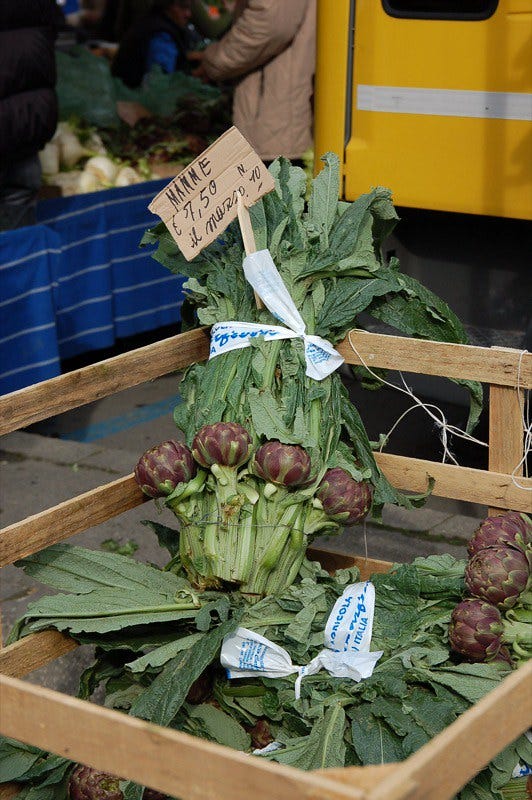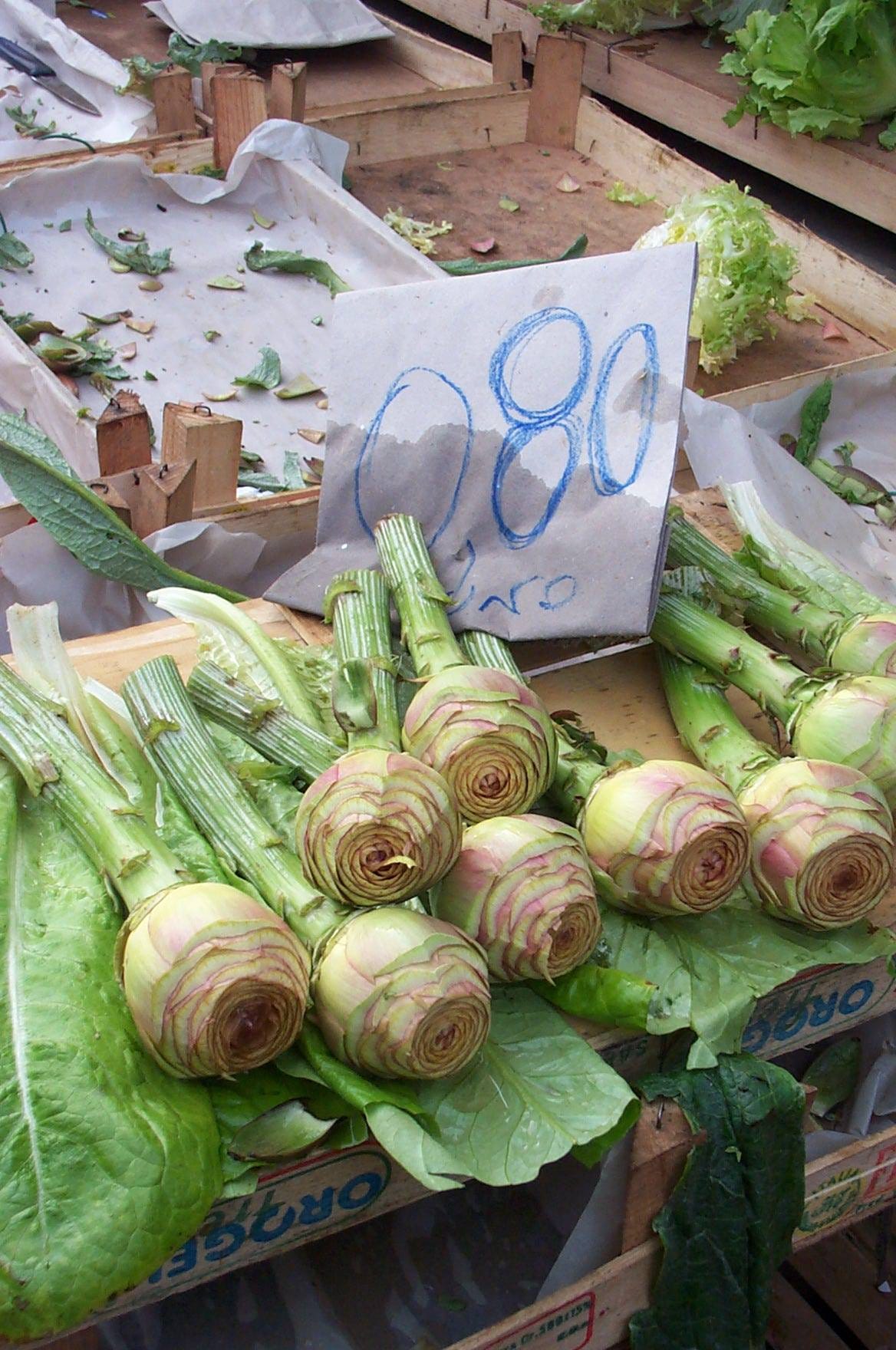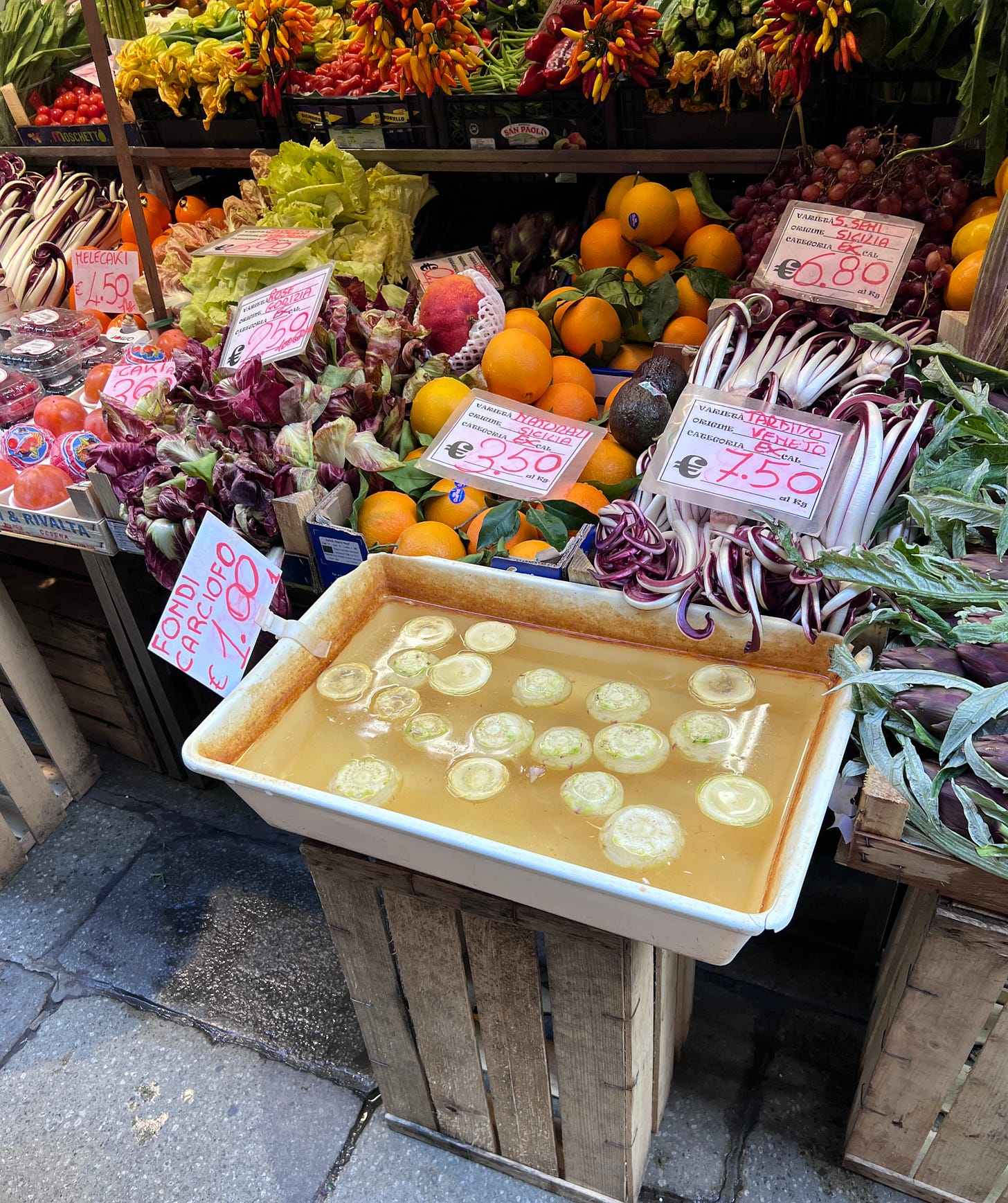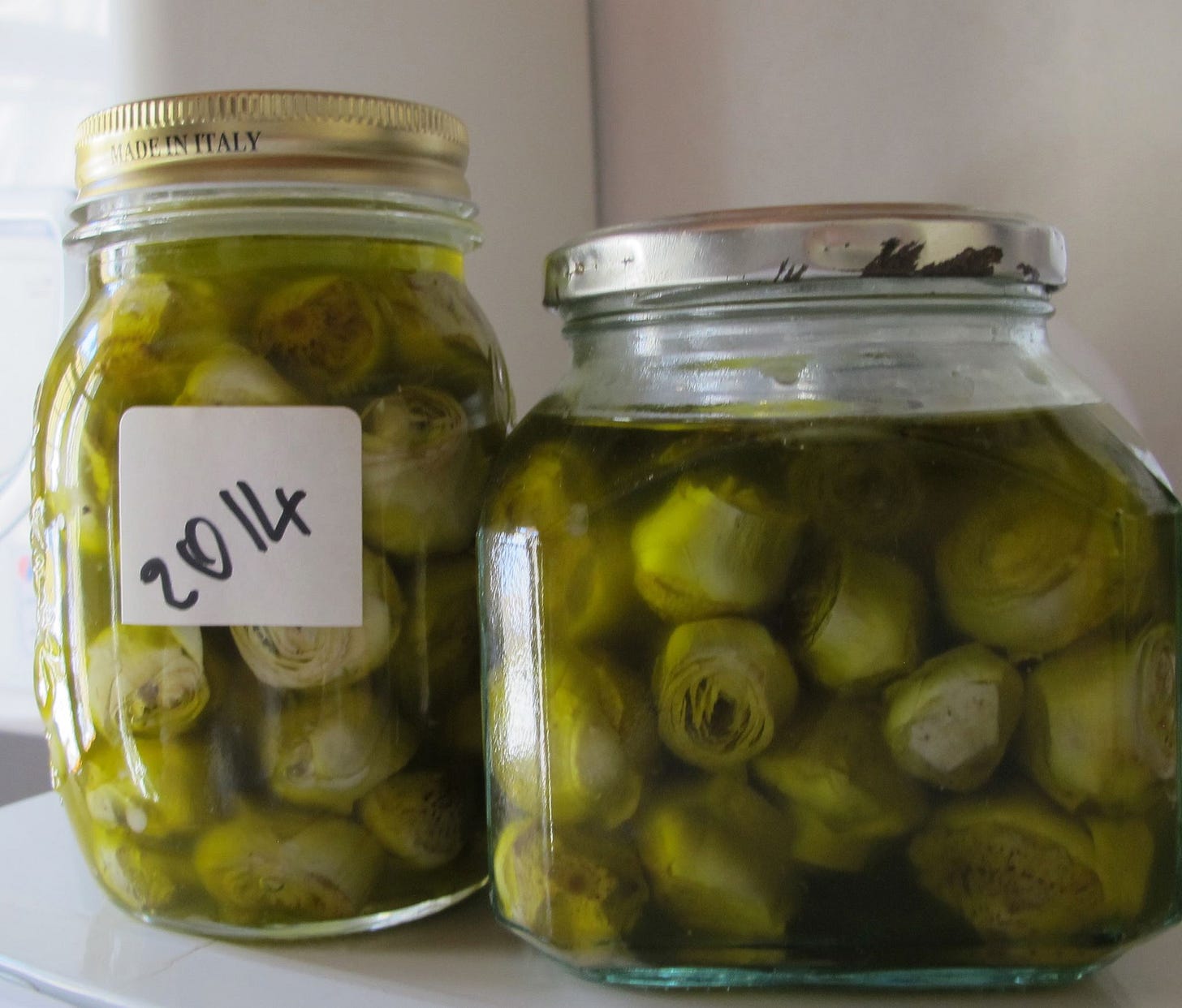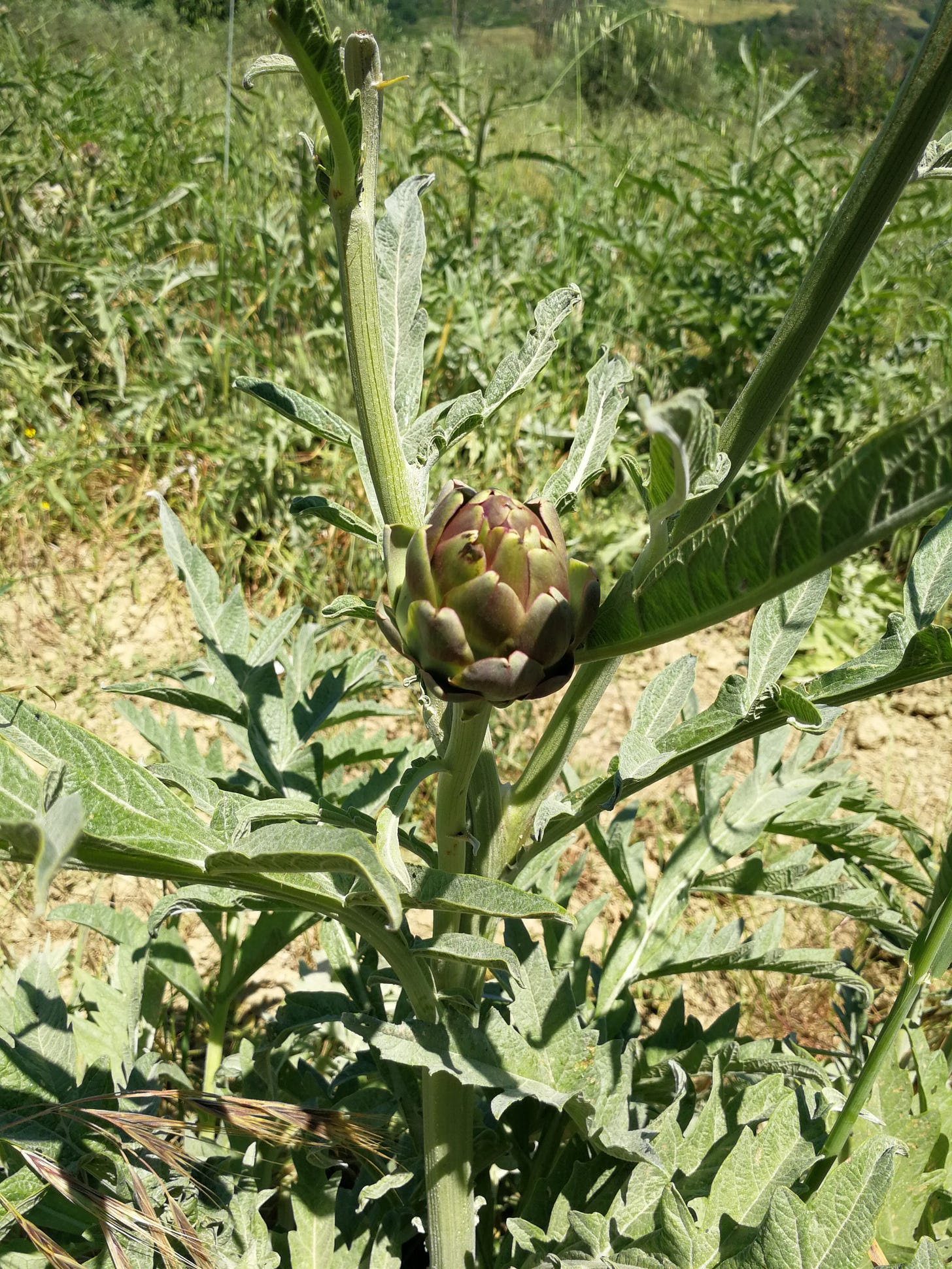When I decided to open a cooking school in Florence, I wanted to teach from a typical home kitchen and be close to the Mercato. Florence has two fixed markets: San Lorenzo and the San Ambrogio market, near where I first lived in town. I was lucky to find an apartment overlooking the San Lorenzo Market.
When I moved to Italy, I was shocked to see Italians eat the whole artichoke after removing the tougher outside leaves. As you move around the globe, the ingredients change, as do the recipes and preparations. They had several kinds of artichokes, each with a different way of preparing.
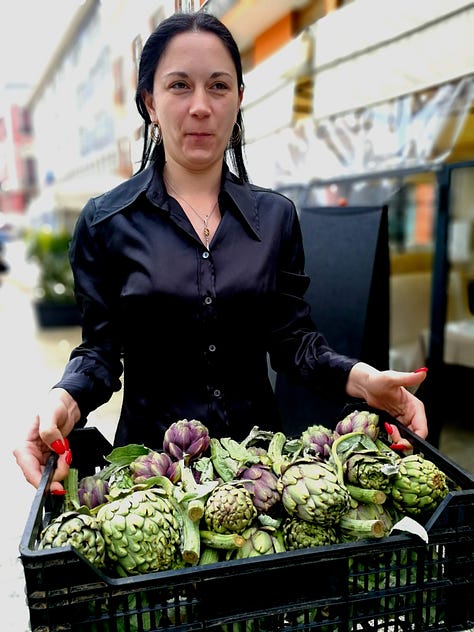


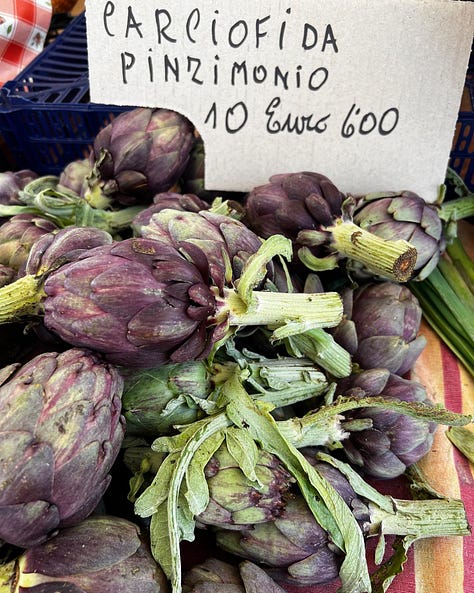

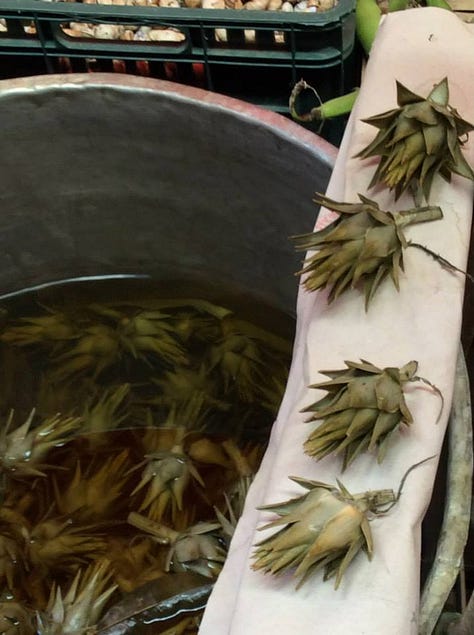

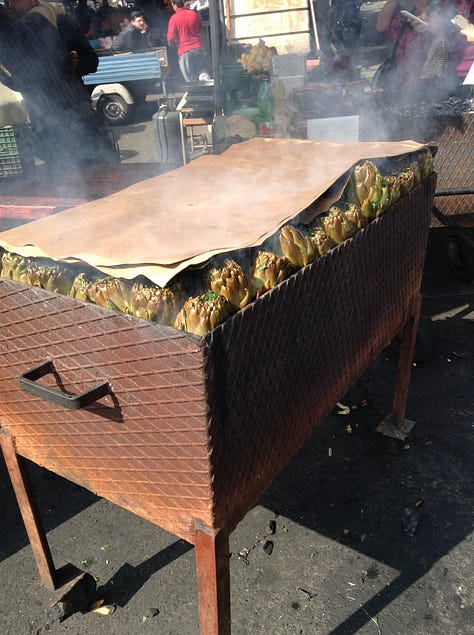
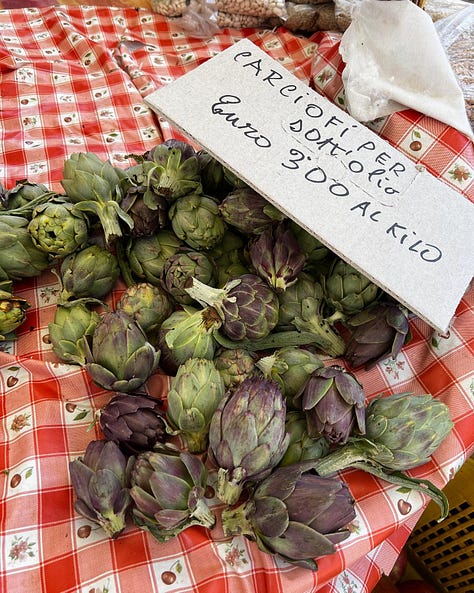
I would rather have a bouquet of artichokes rather than roses.
Leo Piazzesi was my artichoke Maestro. The vegetable shops used to be upstairs, where they were moved to after the 1966 flood in Florence. The stands were originally outside in the back of the market, and the refrigeration units were under the market.
Leo’s stand was beautifully curated, as seen in the photos. On the weekend, his daughters would often help him as well.
In Tuscany, several smaller artichokes can be eaten raw, and tiny ones from the stems are called “castraure.” When an artichoke grows, there is one more giant artichoke at the top and smaller ones on the stems. They are removed- “castrated,” allowing the main artichoke to grow.
There are many types of artichokes and many recipes in the various regions of Italy. Boiled, grilled, fried, stuffed, and raw.
Rome has the larger artichokes called MAMME, which you will find in the ghetto area. Carciofi alla Romana and Carciofi alla Giudea. The twice-fried artichokes are the Jewish style, all giudea.
When you are lucky, you will find them sold with their long stems at the market. The stems are an extension of the hearts, and when you peel them, they are delicious.
They are sold cleaned in the Roman markets like this for their recipes.
In Venice, you find the hearts cleaned and ready for cooking.
Leo was always ready to do a demo on cleaning an artichoke to be used in our class that day. I have two recipes from Leo I make yearly. The traditional Tortino di Carciofi is not easy to find outside the home. Trattoria Sostanza serves it, and I always order it when I am there.
The other recipe from Leo I make is the preserved smaller artichokes. I used to do around 200 a year. Carciofi sott’olio- artichokes preserved in oil.
My mother-in-law Tina made the best-fried artichokes, carciofi fritti.
It’s artichoke season now. We first get artichokes from the southern part of Italy, and later, they are also grown here in Tuscany. I see artichoke farms all around my town.
This week’s homework recipes are:
Leo’s Artichoke Tortino
Leo’s Preserved Artichokes
Video lesson: How Tuscans clean an artichoke
Tina’s fried Artichokes
Raw Artichoke Carpaccio
Artichoke Parmigiano
Jewish Artichokes
The recipes are behind the paywall for the paid subscribers. Join and get access to all the archives as well. The Guides to the Markets of Italy and my free ebook Secrets from My Tuscan Kitchen are included.

